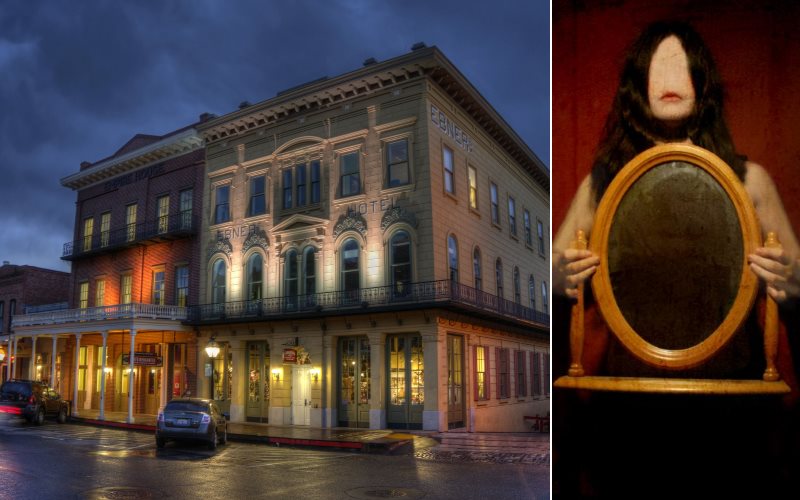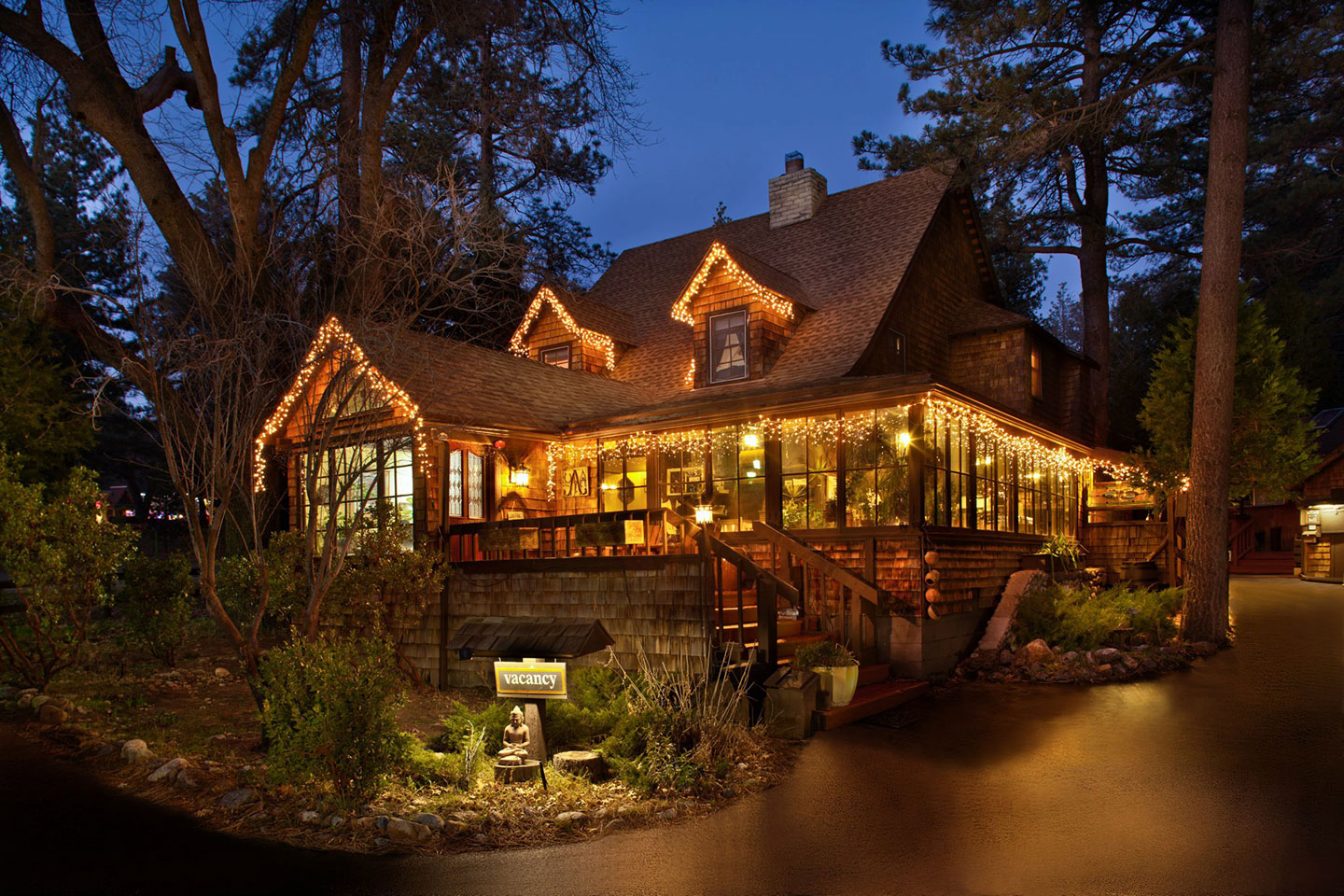
Whispers from the Past: America’s Haunted Hotels and the Legends They Keep
America, a nation forged in paradox, often presents a polished veneer of progress and innovation. Yet, beneath the gleaming skyscrapers and bustling metropolises lies a rich, sometimes unsettling, tapestry of history. This history, often violent, tragic, or simply brimming with untold stories, has left an indelible mark not just on the land, but on the very fabric of its buildings. Among the most evocative repositories of these spectral echoes are its grand old hotels – places where countless lives have intersected, emotions have soared and plummeted, and sometimes, the residents never truly checked out.
From the rugged peaks of the Rockies to the sun-drenched shores of California, and the sultry air of the Deep South, America’s haunted hotels stand as silent, yet incredibly vocal, witnesses to a past that refuses to be forgotten. They are more than just places to rest one’s head; they are living museums, their corridors whispering tales of love, loss, murder, and mystery, drawing in skeptics and believers alike into a captivating dance with the unknown. This journalistic exploration delves into the legends clinging to these historic establishments, examining the allure of the paranormal and what these spectral residents tell us about America’s enduring fascination with its own haunted heritage.
The Architecture of Memory: Why Hotels Become Haunted

Why do hotels, in particular, seem to attract and retain paranormal activity? Part of the answer lies in their very nature. These are transient spaces, grand stages where human dramas unfold daily. Guests arrive with their hopes, fears, joys, and sorrows, leaving behind an emotional residue that some believe can imprint itself upon the environment. Furthermore, many of America’s most haunted hotels boast immense age, intricate architecture, and a history steeped in significant events – from the Gilded Age’s opulence to the Civil War’s brutal aftermath, from the Wild West’s lawlessness to the Jazz Age’s decadence.
"Hotels are like emotional sponges," explains Dr. Eleanor Vance, a folklorist specializing in American supernatural traditions. "Thousands of people pass through, each leaving a fragment of their story. When you combine that with original construction materials, deep foundations, and sometimes, tragic events occurring within their walls, you create a potent environment for residual energy or even intelligent hauntings."
Indeed, many of these establishments were built during eras of less stringent safety regulations, where accidental deaths among staff or guests were not uncommon. Others bore witness to murders, suicides, or the slow, painful decline of long-term residents. These events, often sudden and violent, are frequently cited as the genesis of a haunting, trapping spirits in an endless loop of their final moments or tethering them to a place of profound emotional significance.
The Shining Example: The Stanley Hotel, Estes Park, Colorado
Perhaps no hotel embodies the allure of the American haunted legend quite like The Stanley Hotel in Estes Park, Colorado. Nestled against the dramatic backdrop of the Rocky Mountains, this grand Georgian Revival hotel, opened in 1909 by F.O. Stanley of Stanley Steamer fame, would likely be famous for its opulent beauty alone. However, its true celebrity status comes from its role as the inspiration for Stephen King’s chilling novel, "The Shining."
King and his wife spent a night in Room 217 in 1974, finding themselves the only guests in the cavernous, almost deserted hotel just before its seasonal closing. The eerie solitude, combined with a vivid dream King experienced, sparked the idea for the Overlook Hotel and its malevolent spirits. Today, Room 217 remains one of the most requested rooms, guests hoping to experience the same spine-tingling phenomena King did.
The Stanley’s hauntings predate King’s visit. Flora Stanley, F.O.’s wife, a pianist, is said to still play her antique Steinway in the music room, with guests and staff reporting hearing spectral music when no one is there. Other common occurrences include lights turning on and off, objects moving on their own, and disembodied voices. Room 401 is reputedly home to the spirit of a former chief housekeeper, Elizabeth Wilson, who was injured in an explosion in Room 217 in 1911. Her presence is often felt by female guests who find their clothes unpacked or their belongings tidied. The hotel leans into its reputation, offering ghost tours and proudly displaying its paranormal bona fides, cementing its status as a pilgrimage site for supernatural enthusiasts.
A Floating City of Souls: The RMS Queen Mary, Long Beach, California

Crossing the continent to the sunny shores of Long Beach, California, we find another colossal monument to the past, now permanently docked and serving as a hotel: the RMS Queen Mary. This majestic ocean liner, once the epitome of luxury and wartime service, now holds the distinction of being one of America’s most intensely haunted locations.
Launched in 1934, the Queen Mary served as a transatlantic passenger liner before being converted into a troopship during World War II, earning the nickname "Grey Ghost." Her history is rich with life and death – glamorous voyages, wartime heroics, and tragic accidents. Over 50 documented deaths occurred on board, from crew members crushed in watertight doors to passengers succumbing to illness or drowning in the ship’s pool.
Today, the ship is a thriving hotel and tourist attraction, but its past residents are said to be very much present. Guests and staff report encounters with a variety of spirits: a young girl named Jackie who drowned in the first-class swimming pool, often heard giggling or splashing; the spirit of a crewman, John Henry, who was killed in the engine room’s Door 13, his apparition sometimes seen near the area; and the spectral presence of a "Lady in White" often spotted dancing in the Queen’s Salon. Room B340 (formerly Cabin B340) is particularly notorious, with reports of faucets turning on, sheets being pulled off beds, and even physical contact. The sheer scale of the Queen Mary, with its labyrinthine corridors, engine rooms, and former swimming pools, offers countless nooks and crannies for its spectral inhabitants to reside, making it a compelling, if sometimes unsettling, experience.
The Ozarks’ Dark Secret: The 1886 Crescent Hotel & Spa, Eureka Springs, Arkansas
Deep in the heart of the Ozark Mountains lies Eureka Springs, Arkansas, a picturesque town with a surprisingly dark secret embodied by the 1886 Crescent Hotel & Spa. Originally built as a lavish resort for the wealthy, the hotel’s fortunes turned drastically in the late 1930s when it was purchased by Norman Baker, a notorious charlatan. Baker converted the hotel into a fraudulent cancer hospital, preying on the desperate with his "cures" and often performing botched surgeries in horrific conditions. Many patients died under his care, their bodies sometimes buried on the property.
Baker was eventually exposed and imprisoned, but the echoes of his cruel reign and the suffering of his victims are said to linger. The Crescent Hotel is now often called "America’s Most Haunted Hotel." Among its many reported ghosts are Michael, an Irish stonemason who fell to his death during the hotel’s construction, often seen in Room 218; Theodora, a cancer patient from Baker’s hospital, who frequents Room 419, known for moving objects and whispering to guests; and a nurse, seen pushing a gurney through the halls of what was once the morgue. The hotel offers popular ghost tours, delving into its grim history and the numerous paranormal encounters documented by staff and guests, transforming its tragic past into a compelling, if macabre, attraction.
California’s Golden Haunts: The Hotel del Coronado, Coronado, California
California, a state synonymous with dreams, gold rushes, and Hollywood glamor, also harbors its share of restless spirits. Among its most elegant and storied haunted hotels is the Hotel del Coronado, a grand Victorian resort on Coronado Island near San Diego. Opened in 1888, "The Del" has hosted presidents, royalty, and movie stars, but its most famous resident is Kate Morgan, a beautiful young woman who checked into the hotel in November 1892 and was found dead on an exterior staircase five days later from a self-inflicted gunshot wound. Her death was ruled a suicide, but the circumstances have fueled speculation and enduring mystery.
Kate’s spirit is said to linger primarily in Room 302 (now 3327), where she stayed, and throughout the hotel. Guests report flickering lights, unexplained noises, objects moving, and sudden cold spots. Some have seen her apparition, often described as a pale, beautiful woman in Victorian attire. The hotel, with its iconic red-roofed turrets and rich history, provides a stunning backdrop for Kate’s tragic tale, making her one of California’s most famous and enduring spectral legends. The intrigue surrounding her death, coupled with the reported hauntings, ensures that "The Del" remains a captivating blend of luxury and the supernatural.
The Enduring Allure: Why We Seek Out the Haunted
The fascination with haunted hotels extends beyond mere curiosity; it taps into deeper human impulses. For some, it’s the thrill of the unknown, an adrenaline rush derived from confronting the possibility of the supernatural. For others, it’s a desire to connect with history in a visceral way, to feel the echoes of lives lived long ago. Ghost tourism has become a significant industry, with hotels, tour operators, and even entire towns capitalizing on their spectral residents.
"People are drawn to these places because they offer a tangible link to stories that defy rational explanation," says paranormal investigator Mark Johnson, who has spent decades exploring haunted sites. "Whether you believe in ghosts or not, there’s an undeniable atmosphere, a sense of history breathing down your neck. It challenges our understanding of life and death."
Yet, not everyone experiences the paranormal, and skepticism remains a crucial counterpoint. Many supposed hauntings can be attributed to natural phenomena: old building creaks, drafts, infrasound (low-frequency sound waves that can induce feelings of anxiety or unease), or even psychological suggestion. The power of expectation can be immense; a guest told a room is haunted might interpret every creak or shadow as evidence of a ghost.
However, the sheer volume and consistency of reported phenomena in some of these hotels, often by unrelated individuals and staff, lend credence to the legends. The stories become part of the hotel’s identity, passed down through generations of employees and enshrined in guest testimonials.
Conclusion: America’s Undying Legends
America’s haunted hotels are more than just old buildings with eerie tales; they are cultural touchstones, reflecting the nation’s complex and often tumultuous past. They remind us that history is not a static collection of dates and facts, but a living entity, sometimes with unfinished business. From the high-altitude chill of the Stanley Hotel to the nautical mysteries of the Queen Mary, the dark despair of the Crescent Hotel, and the elegant tragedy of the Hotel del Coronado, these establishments offer a unique window into the American psyche.
They represent our collective fascination with death, the afterlife, and the lingering power of human emotion. Whether through the mournful piano notes of Flora Stanley, the mischievous giggles of Jackie on the Queen Mary, the desperate cries of Norman Baker’s victims, or the spectral presence of Kate Morgan, these legendary hotels invite us to listen closely. For in their spectral whispers, we might just hear the untold stories of America itself, forever bound to the places where lives intersected, and sometimes, never truly departed. In a nation obsessed with the new, these old, haunted hotels stand as powerful testaments to the enduring power of the past, forever checking in, but never truly checking out.


